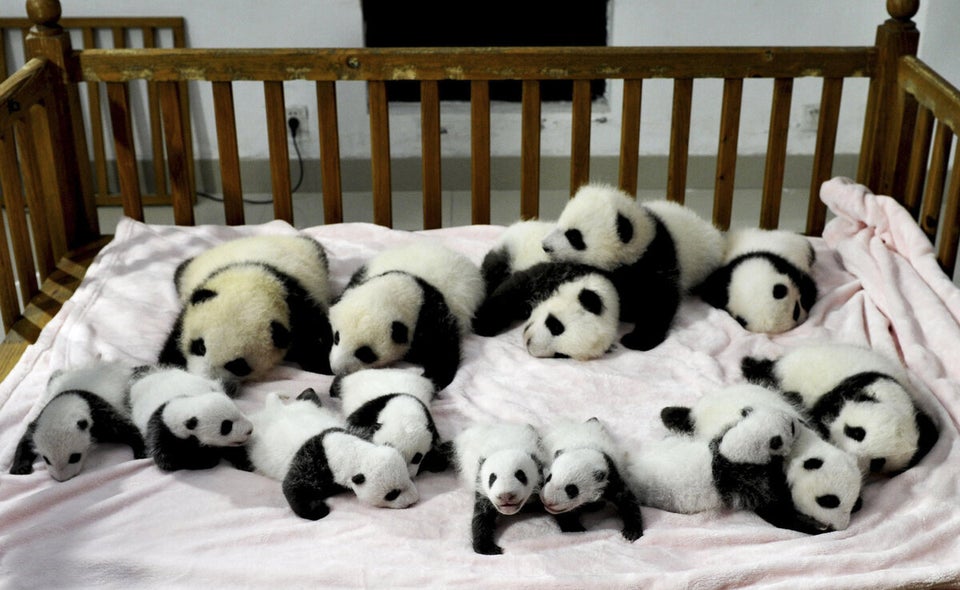Since seeing my first wild bear at the age of seven, my passion for the wild has been fuelled by my love of nature photography.
As I mentioned in a previous blog, with the launch of Ghost Bear Photography, my hope -- and that of my co-founder, Jill Cooper -- is to spark a passion for the wild in others by using photography and story telling as a tool to help the world fall in love with nature again. After all, I passionately believe the camera can freeze moments that can inspire a wired world to appreciated the interconnectedness of all life.
But within communities of passionate wildlife advocates, few topics are as divisive as the perception of wildlife photography. And for good reason.
Killing with Kindness?
I've been fortunate enough to study bear behaviour and be trained by world-renowned bear biologists and bear guides. With over 20 years of experience photographing and researching not only bears, but many other types of wildlife all across North America, we have a good sense of how to photograph wildlife without threatening the animal's wellbeing. That being said, we're human and we, doubtlessly, make mistakes.
Every time you photograph an animal, there is always the concern of habituating wildlife and the omni-present reality that, when photographing animals in a public space, a misguided tourist will inevitably cross the line and harass the photographic subject.
For this reason, many have argued that if you see a bear in a national park, you should not stop to watch it or take a photograph, knowing that it will lead to a 'bear jam'. And while I understand this argument, there is an important counterpoint.
Conservation biology is clear: bears -- and other indicator species -- need large, roadless wildernesses in order to survive. While many of these spaces exist in the world, most national parks -- places like Yellowstone and Banff -- are not and never will be that roadless wilderness.
In fact, though the perception is that these wild spaces exist to conserve wildlife, the reality is, for better or worse, they were created for the benefit of the people.
Embracing Reality
Many national parks are trying to re-wild their front and back country and put a heightened focus on animal conservation. This is admirable. But roadways and trails (and, frustratingly, towns, golf courses and ski resorts in Canada's parks) are here to stay.
As a result, this imperfect version of protected wilderness needs to strike a fine balance between animal needs and the bigger picture of helping people foster a love for nature and conservation.
Seeing bears in the wild is a remarkable experience and positive bear (and wildlife) encounters are critical to creating a culture that appreciates and supports balanced conservation.
It's a known fact that people who have first-hand experience with a region or a specific animal are more likely to believe in its protection. Indeed, seeing, and eventually photographing, bears (including the spirit bear) in the wild was what led to my all-consuming commitment to protecting the Kermode.
So while most of us can understand why many parks have policies in place that discourage bear watching, in my opinion, it's a futile fight, and a misguided one to boot.
The Power of Jams
Parks like Banff and Yellowstone will never, on their own, be sufficient to sustain functioning populations of large carnivores. Yet, in order to create the political will to establish large, connected and roadless wildernesses, these parks can assist conservation through land protection, yes, but more critically can act as the conduit for people to understand and appreciate nature.
We need parks -- using their frontline spokespeople, rangers -- to champion policies and people that use wildlife jams as a manageable tool to provide people with first-hand education and positive experiences (and photos) to take home to share with their social networks.
Yes, there will be times when a wildlife jam is inappropriate (impact on the animal, impact on traffic, people safety, etc.) and a good ranger knows the difference between a bad jam that can't happen and a good jam that is safe.
But by educating the untrained tourist at wildlife viewing opportunities -- and empowering the many responsible photographers who are well-versed in animal behaviour -- parks can create the conditions for positive experiences that will translate into an environmentally conscious populous. (To give credit, my mother has been arguing this point for years.)
This is a philosophy that is increasingly embraced in Banff and Jasper and within some regions of Yellowstone. And even Grand Teton National Park, which has been at war with photographers for years, appear to have seen the light and have decided to work with their once sworn enemy.
Still, places like Kananaskis Country in Alberta -- ironically, the great bastion of libertarianism -- persist with policies that actively discourage people from watching bears and, in the name of saving bruins, actually try to make the animals more aggressive toward people (more on that in another post).
Imperfection at its Best
I don't pretend to have all of the answers and, yes, at times wildlife photography can hurt the subjects we're trying to capture.
That said, it strikes me that rather than trying to seek an impossible-to-achieve utopia, where animals that encounter people are left to their own devices, we should embrace reality and work to take advantage of a marvellous engagement opportunity.
Parks can help people find inspiration from wildlife watching/wildlife photography and, in the doing, drive up much needed visitation numbers that will, in turn, yield more resources to ensure the proper balance is struck.
And it is indeed a fine balance in an imperfect world, but one that must be struck. For shunning wildlife photography is to waste what I believe is our greatest opportunity for engaging the unengaged in the quest to protect the true wilderness -- places where the animals will always come first.
ALSO ON HUFFPOST:
